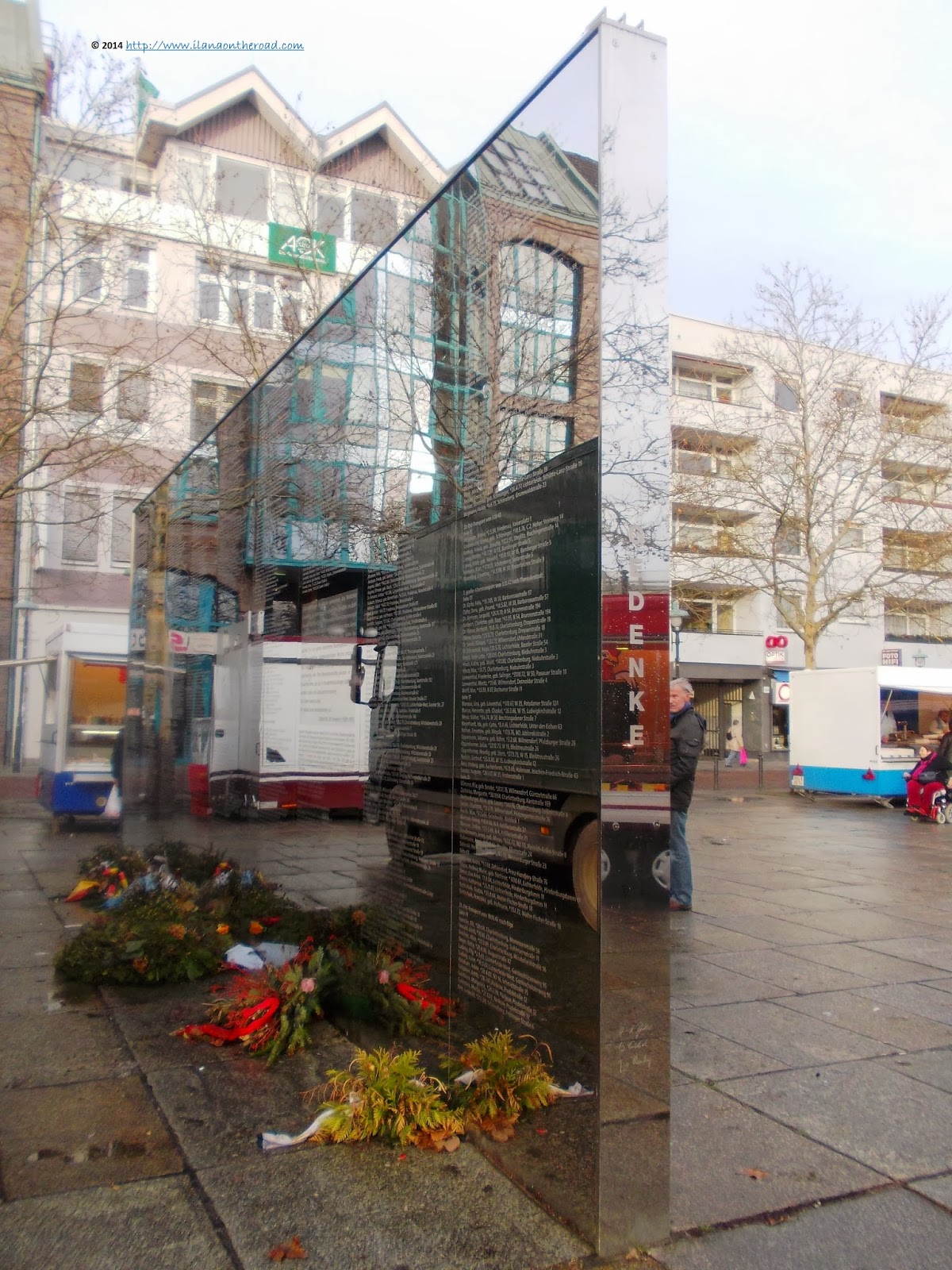With such a lovely snowless winter, one of my best by far in years, I had a lot of opportunities to spend more time in various parts of Berlin, enjoying the sunny clear sky and the mild wind. I used to go very often in Steglitz for a while, but haven't been for more than 6 months and wanted to discover new spots and revisit the old ones. I took the U9 U-Bahn till the station Rathaus Steglitz, that stops at the 19th century red bricked townhall, wall-to-wall to a big shopping center. There is situated the public library of the borough, where interesting lectures are regularly organized and where a couple of years ago I attended a lecture by Jonathan Coe.
On the other side of the street, there is the Schwartzschen Villa, where cultural events, theatre and exhibitions are held. When I visited, the café was open, but did not have time to stop. Another interesting cultural location in Steglitz is Schlosspark Theatre, where I attended a very easy representation in German years ago. On the opposite end, there is the Standtbad Steglitz Kultur, a former swimming pool turned into a cultural arena.
I am not too much the backpacking style, but the Globetrotter shop there is huge, with clothes and accessories for both children and adults. The place is huge and there is hardly anything you can't find there, from books and packs and even a small café. The last year, it used to be a huge lake where one can test the canoe before buying it. The former lake was populated now with a lot of tents, of various sizes and different kind of temperatures.
I left the paradise of globetrotters and started to admire, as usual, the clean architecture of the houses. Steglitz used to be a village, mentioned historically for the first time in the 14th century. It has its own paved road from the 18th century. Since 1920, it was included as part of the big city of Berlin, but kept ever since a distinguished ambiance that reminds me of Spandau - minus the big green areas and the small Citadel.
Before the war, Steglitz used to be an area where many middle class Jewish merchants and businessmen were living. In the memory of the 1,700 Jews originally from here that were killed, a Mirror Wall (Spiegelwand) was built, close to was once a private synagogue. The names and addresses are written on the wall that reflects the people walking by and the life of the square. When there is a day of open market in Albrechtsplatz, the monument is relatively hidden behind counters selling almost everything.
Close to the same square overcrowded with merchandises today, at the end of the war, in 1945, hard fightings took place between the German and the Red Army. Here too, a German deserter whose name was unknown was hanged up by his former comrades.
But most of the people walking today on Schlosstrasse, that grew up in the last 2 years as an important shopping avenue in the city, a competitor for Ku'Damm and Tauentzienstrasse don't care too much about fights and history. You may not find here the big names in fashion, like Chanel or Louis Vuitton, but there is Primark and many other affordable options that attracts here people from all over the city at least once the week. Tourists are also getting in the area, for the same noble aim: shopping.
At the end of the avenue, the huge and unusual Beer Brush built in the 1976 as a beer pub is intriguing. Nowadays, it's quite impossible to resist for too long around its stairs due to some very unpleasant smells.
The foodie offer around is aimed to answer moderate budgets, already affected by the intensive shopping. For a small snack, there is the very cheap Ishin, or the Jasmin Oriental pub on Deitmerstrasse. Confisserie Reichert is strongly recommended for a coffee and a delicious piece of cake.
In less than 2 hours, our tour of Steglitz was done. I revisited old places and discovered new ones. From a visit to another, Steglitz remains still attractive and surprising.
See you the next time!







Keine Kommentare:
Kommentar veröffentlichen